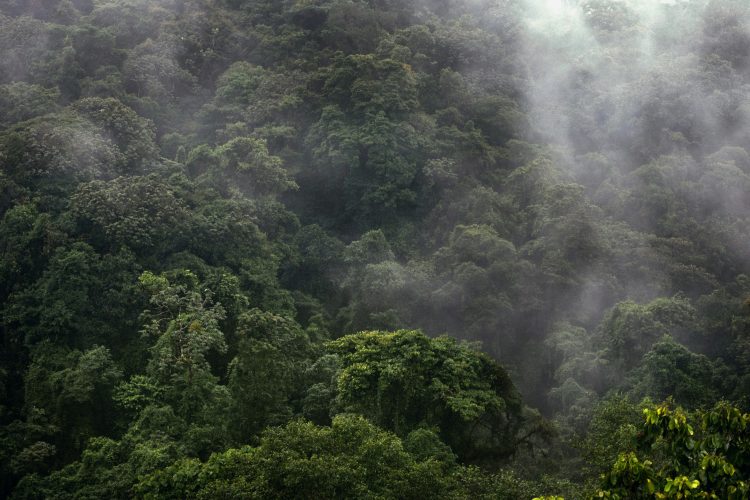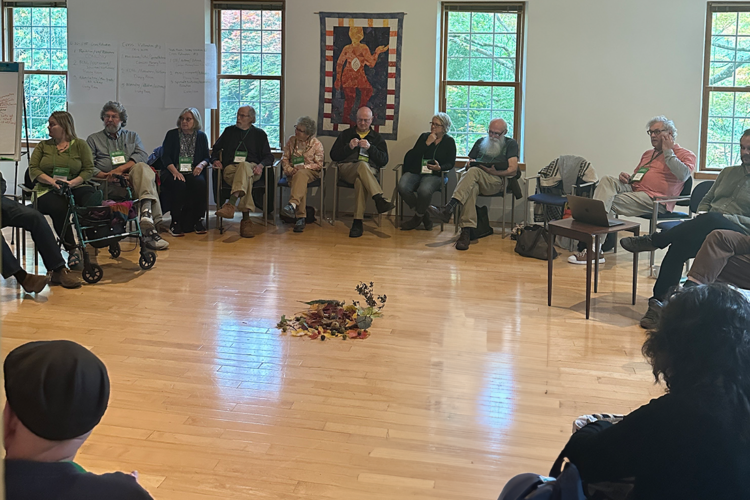Variations on “Summer Light”

Quakers hold one another in the light. Summer Light holds us, enveloping and embracing us through long, quiet days. The very air is bright as the yellow flowers of July and August gather sunlight and offer, in return, an earthly reflection of celestial energy. My favorite image of full-blown summer is our yardful of yellow prairie flowers, native to this place on Earth, full of its spirit, history, and potency.
At every stage of the growing season, it’s the yellow flowers that enliven our yard and illuminate the beauty of other flowers. To the mostly pale flowers of spring, yellow flowers bring substance and zest. In full summer, yellow flowers come into their own, blazing away like miniature suns even in patches of shade. In early fall, goldenrod foams up along the highway and in vacant fields. And as the growing season closes, yellow flowers provide the last rays of light in an herbal layer that, despite the bright-colored leaves overhead, is steadily darkening.
Composites: The Eye of Day
Softly at first and then with increasing intensity, the yellow-flowered members of the composite family (Compositae) announce the arrival of full summer. A yellow daisy-like flower—its central disk encircled by yellow rays—reminds us of the sun, the source of all life. Many of them we call sunflowers. Even the word daisy—as we see from its Old English spelling “daegesege” (day’s eye)—refers to the sun. Of course, not all members of this family, also known as the Aster (star) or Daisy family, bear yellow or daisy-like flowers. Blazing stars and goldenrods, also composites, don’t look at all like daisies.
Daisy-like flowers, typical of the Aster or Composite family, are not the simple, straightforward flowers they seem. Each flower actually comprises many smaller flowers. Dozens of disk flowers form the prominent center. Surrounding the center, posing as individual petals, is a sunburst of corollas or ray flowers. In all their variety and elegance, the Asteraceae, or Compositae, are perhaps the most highly evolved, most efficient family of flowering plants. With more than 1,600 genera and 23,000 species, they’re probably the largest family as well (only the orchids rival them).
Anticipated in some years by golden ragwort and lance-leaf coreopsis, the first yellow composites of summer that bloom in our yard are black-eyed Susans (Rudbeckia hirta). Each ray, or petal, is sculpted by two longitudinal veins, the mounded center a glowing maroon and satin-smooth. A long, close look at this familiar, early-blooming flower can take your breath away. Then, steadily, the sun calls forth more floral reflections, until by late July almost all the yellow, daisy-like composites are in glorious bloom.
Their Glory Is Passing from the Earth
With their bursts of daisy-like yellow flowers, the majestic silphiums are my favorites. They capture my imagination as they did Aldo Leopold’s: “What a thousand acres of Silphiums looked like when they tickled the bellies of the buffalo is a question never again to be answered, and perhaps not even asked” (July, A Sand County Almanac). Three of our four local species of silphium are rare in the wild and listed as threatened. All the more reason to cherish them.
Ranging from five to nine feet tall, they hold up, into the sunlight, clusters of large yellow ray-flowers, invitations to bees, butterflies, and birds. There’s compass plant (Silphium laciniatum), with large, lacy leaves, and prairie dock (S. terebinthinaceum), with massive, rough basal leaves and eight-foot flowering stalks. Those lovely, tall stems of compass plant and prairie dock persist during fall and winter, providing perches and seeds for birds, and harboring more insects both in the stems and in fallen litter than almost any other plant.
The most distinctive of the Silphiums may be the cup plant (Silphium perfoliatum), especially for the oddity of its leaves, which clasp the plant’s strong, square stalk so as to form a cup with rounded lip, able to hold rainwater. Goldfinches drink from these cups, perhaps finding insects in them as well. In bloom, its sprays of yellow flowers held on high, the plant reaches eight feet tall. Its many-rayed flowers distill the fragrance of summer itself. Tiger swallowtail butterflies, drawn to their nectar, sometimes seem as numerous as the flowers themselves.
Another favorite, gray-headed coneflower (Ratibida pinnata), has several other common names: yellow coneflower, drooping coneflower, prairie coneflower, and—best of all—weary Susan, because its petals, unlike those of black-eyed Susan, are drooping. Tall, branching stalks and widely-spaced, divided leaves make this an airy, graceful plant. The cone or disk of its flower is at first grayish-green, later turning brown. The long slender rays are translucent—almost silky or gauzy—and lemon yellow. Native Americans used the plant to make a vivid yellow-orange dye. Stirring slightly on long stalks above the leaves, their delicate rays drooping from the cones, these flowers are a lovely sight.
Many Reasons to Love Them
These vigorous yellow composites—sunflowers, silphiums, coneflowers—are as basic to prairie as heat is to summer, as sunlight is to life. So, when they start to overpower other plants you love, you push them back, preserving space for pale purple coneflowers, prairie phlox, or blazing star. You dig them up and give them away, or you isolate them along with other aggressive species and let them duke it out. But whatever the vigorous spread of wild species like downy sunflowers or cup plants, you never consider getting rid of them. They are vanishing from the wild, and the passing of such beauty will leave us desolate.
The supreme reason, however, for fostering these yellow composites is not the sunlike brilliance they bring to our lives but all the pollen, nectar, and seeds they provide to bees, birds, butterflies, and other wildlife, as well as their essential role as host plants for the caterpillar larvae of butterflies and moths. If these prairie plants hadn’t been so attractive to wildlife, so adaptable and opportunistic, they would not have survived the wholesale destruction of their habitat by our forebears, compounded by ourselves.
These are the rare and disappearing variations on “summer light,” symbols and generations of the maturing sun. Hold them in the light, as they embrace us with their light and enliven us with their breath. Provide them and their relations with homes in your yards and meeting-house grounds, so they may continue to provide shelter, food, and life to entire communities of species, both those we love and those beyond our notice or ken, invisible to our eyes but not to the “eye of day,” which beholds and cares for them all.
[Photo: Tiger swallowtail butterflies on cup plant. Copyright Amelia Hansen. Used with permission.]

